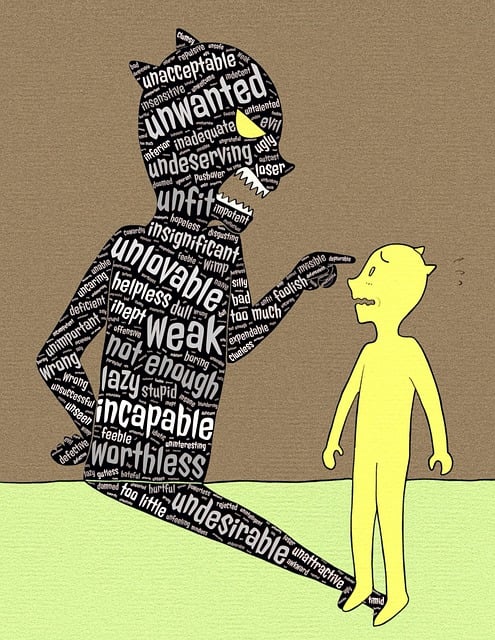Building a Supportive Environment for Growth and Learning
Have you ever felt stuck in a place where your ideas and ambitions weren’t valued or encouraged? It can be disheartening to feel unsupported, especially when you’re trying to grow, learn and pursue your goals. The environment we surround ourselves with plays a critical role in shaping our mindset, behaviors and potential for success. Creating a supportive environment — both at home and in the workplace — is key to fostering growth, innovation and continuous learning. When we are surrounded by people who encourage us, provide constructive feedback and share our vision, we are more likely to reach our full potential.
Confidence in your abilities to go after your goals can sometimes be difficult to find or keep.
It can sometimes take time to discover the confidence you have inside you. This can be especially true if you are trying something new.
I have a program that can help you to discover what is holding you back from achieving your goals as well as help you set an attainable goal related to where you are in your life and where you are trying to be.
This program also works with you to build up your confidence in being able to reach your goal.
You can find out more about this program at Confidology, a funny name but a serious program.
You can contact me to talk about this or any other aspect of confidence and success at michael@coachmichaelw.com
Visit the site and read through the program description.
If you are not ready to commit to a full program, I have a self-paced course on Udemy that may be of interest. You can find out about the course and register at Confidence and Motivation Development and Maintenance
A supportive environment isn’t just about having positive people around; it’s about cultivating a space where growth and learning are prioritized. This involves creating an atmosphere where mistakes are seen as learning opportunities, feedback is given constructively and everyone is encouraged to pursue their goals. In such an environment, individuals feel safe to take risks, express their ideas and explore new possibilities without fear of judgment or criticism. It’s a place where curiosity is nurtured, collaboration is encouraged and continuous improvement is the norm.
In the workplace, a supportive environment can have a profound impact on employee satisfaction, performance and innovation. Companies that prioritize a culture of support and learning tend to have more engaged, motivated and productive employees. When leaders foster a positive atmosphere by recognizing achievements, providing opportunities for growth and encouraging open communication, they create a foundation for long-term success. Google, for instance, is known for its employee-centric culture, which emphasizes creativity, collaboration and continuous learning. By offering flexible workspaces, opportunities for professional development and a culture of feedback, Google has created an environment where employees feel valued and empowered to grow.
But what makes an environment truly supportive? One of the most critical elements is positive communication. The way we speak to and interact with others can either build them up or tear them down. Supportive environments are characterized by open, respectful and constructive communication. This means actively listening to others, acknowledging their ideas and providing feedback that is aimed at helping them improve rather than criticizing them. When people feel heard and respected, they are more likely to share their thoughts and ideas, leading to a more collaborative and innovative atmosphere.
Another key component of a supportive environment is the presence of constructive feedback. In any setting where growth and learning are prioritized, feedback is an essential tool. However, it’s important that feedback is given in a way that is helpful and encouraging rather than harsh or judgmental. Constructive feedback focuses on specific behaviors and actions, offering suggestions for improvement while highlighting strengths. This approach helps individuals understand what they can work on without feeling demoralized. It’s about creating a dialogue that supports growth rather than fostering a fear of failure.
Actionable Step: Start giving more constructive feedback to those around you. When providing feedback, use the “sandwich” method: begin with a positive comment, address the area for improvement and then end with another positive note. This technique helps create a balanced conversation that encourages growth and maintains a positive tone.
Encouragement and recognition are also crucial elements of a supportive environment. Celebrating achievements, no matter how small, can have a significant impact on motivation and morale. When we acknowledge the efforts and progress of others, we show that we value their contributions. This positive reinforcement can boost confidence, foster a sense of belonging and inspire people to continue striving toward their goals. Whether it’s a simple “great job” or a more formal recognition like an employee of the month award, taking the time to appreciate others’ efforts can create a more positive and supportive atmosphere.
A growth-oriented environment also requires a strong sense of psychological safety. This term, popularized by researcher Amy Edmondson, refers to a workplace climate where individuals feel safe to take risks and express their ideas without fear of negative consequences. In environments with high psychological safety, team members are more likely to share innovative ideas, voice concerns and admit mistakes. This openness leads to better problem-solving, increased creativity and higher overall performance. Creating psychological safety starts with leaders who model vulnerability, encourage open dialogue and demonstrate that it’s okay to make mistakes and learn from them.
In our personal lives, cultivating a supportive environment is just as important. Surrounding ourselves with people who encourage and believe in us can make a significant difference in our ability to grow and achieve our goals. Friends, family members and mentors who offer positive reinforcement, constructive feedback and a listening ear can provide the support we need to navigate challenges and pursue our ambitions. On the other hand, a negative or unsupportive environment can be draining, stifling our creativity and motivation. It’s essential to evaluate the relationships in our lives and seek out those that contribute positively to our growth and well-being.
Creating a supportive environment also involves setting clear goals and expectations. When everyone in a group or team understands the shared goals and their roles in achieving them, it fosters a sense of unity and collaboration. Clear expectations help prevent misunderstandings and provide a roadmap for success. When people know what is expected of them and how their efforts contribute to the bigger picture, they are more likely to feel motivated and engaged. This clarity is an important part of building a supportive environment where everyone feels aligned and empowered to work toward common objectives.
In addition to positive communication, recognition and clear goals, providing opportunities for continuous learning is vital in a supportive environment. Whether it’s through professional development programs, workshops or informal skill-sharing sessions, offering avenues for growth shows that you value the personal and professional development of those around you. Continuous learning keeps individuals engaged, helps them acquire new skills and enhances their ability to contribute meaningfully to the group or organization. This focus on learning and growth creates a culture of improvement where everyone is encouraged to strive for their best.
Lastly, fostering a culture of inclusivity and diversity is a cornerstone of a supportive environment. When people feel accepted and valued for who they are, regardless of their background, experiences or perspectives, it creates a sense of belonging. An inclusive environment embraces different viewpoints and encourages collaboration across diverse teams. This diversity of thought can lead to more innovative solutions, as people bring their unique experiences and ideas to the table. Building an inclusive and supportive environment requires ongoing effort, but the rewards — a more engaged, creative and resilient group — are well worth it.
Ultimately, creating a supportive environment for growth and learning is about fostering a culture where everyone feels valued, heard and encouraged to pursue their goals. It’s about building spaces — whether in the workplace or at home — where people can take risks, make mistakes and learn without fear of judgment. By prioritizing positive communication, constructive feedback, recognition, clear goals, continuous learning and inclusivity, we can create environments that not only support individual growth but also drive collective success.
If you’re looking to build a more supportive environment in your life, start by examining the spaces and relationships around you. Consider how you can contribute to a culture of encouragement and growth, whether it’s by offering constructive feedback, celebrating others’ achievements or simply being a supportive presence. The more we invest in creating these environments, the more we can unlock the potential of ourselves and those around us, paving the way for continuous learning and shared success.
To talk about any aspect of success or working with a Life Coach to help you to achieve success, you can book a 30-minute call by clicking on the blue button below.
Don’t try to do all of this by yourself, ask and receive the guidance that can get you moving towards your own success.
Nothing happens until action is taken.
To your success.
Michael
P.S Don’t forget to visit Confidology to learn more about the program. If you are not ready to commit to a full program, I have a self-paced course on Udemy that may be of interest. You can find out about the course and register at Confidence and Motivation Development and Maintenance
P.P.S if you want to find out more about my programs just check out the site Confidence and Life Coaching
P.P.P.S. If you enjoy reading these articles on my blog, I have more books that have more of this type of information that you can find out more about at Books to Read. You can buy these ebooks at many on-line book stores. The links to the bookstores are at the link above.
If you have an Amazon Kindle account, there are different books at Amazon – Michael W (author)
Photo by Nijwam Swargiary on Unsplash






